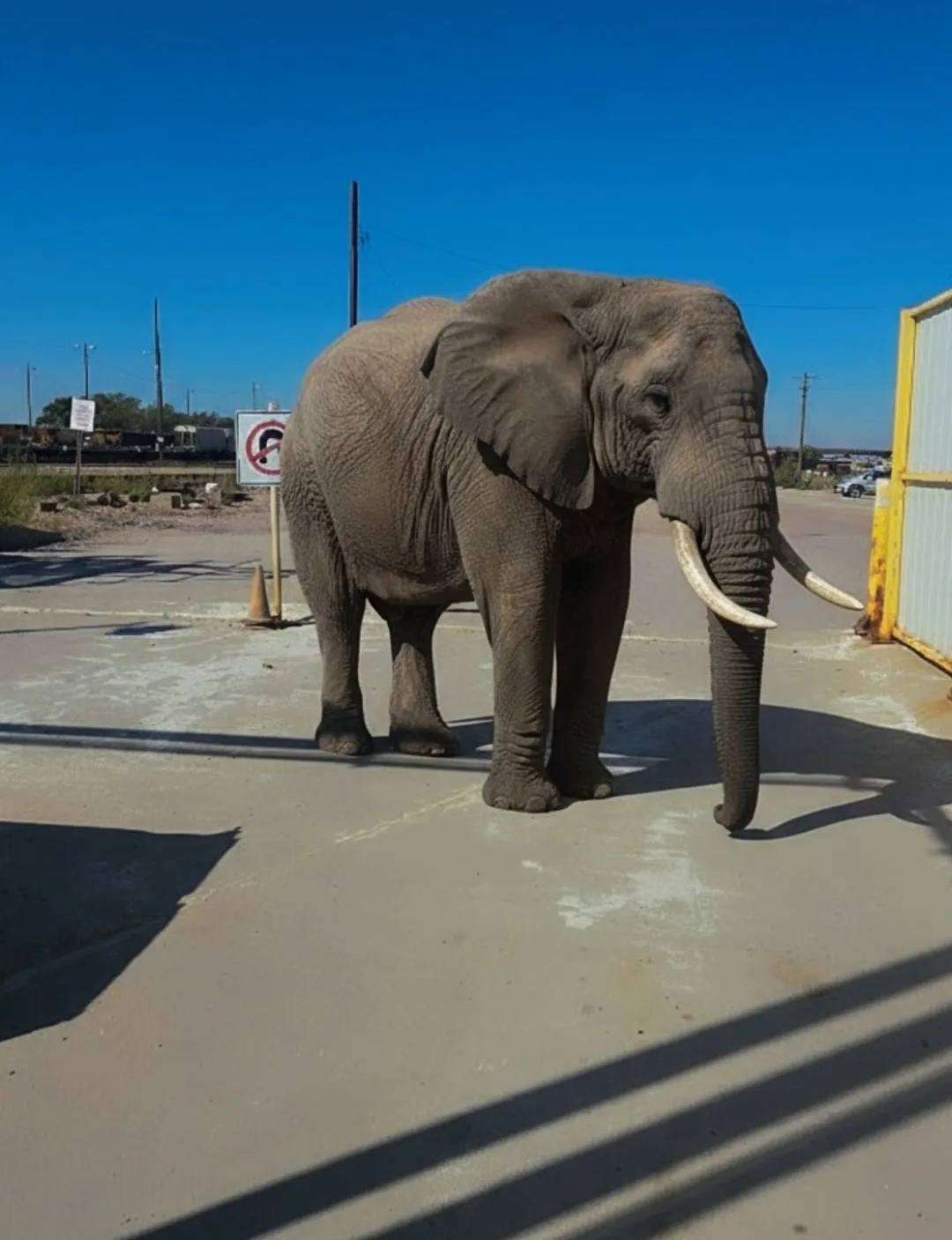
NORTH PLATTE, Neb. — An unusual story made the rounds on Facebook this weekend, claiming that an elephant had escaped from a train at Bailey Yard and was roaming the Union Pacific property in North Platte.
The post, which included a realistic-looking photo of an elephant walking along a parking area, quickly took off — with more than 75 shares and dozens of comments across local community pages. Some users expressed concern or curiosity, while others cracked jokes about a “circus train gone wrong.”
But there was one big problem: none of it was true.
There was no elephant, no escaped train car, and no incident reported by Union Pacific or local law enforcement. The image and story were both created using artificial intelligence (AI) — a growing trend on social media where fabricated photos and articles can look increasingly convincing.
How It Fooled People
AI tools can now generate photo-realistic images and write entire articles within seconds, mimicking real news sources or blending into social media feeds. In this case, the photo showed an elephant on train tracks with near-perfect lighting and detail — but small clues gave it away, including distorted rail lines and mismatched shadows. Even the details in the now removed AI article which stated 6:45 AM while the photo showed broad daylight, or the description of an Asian Elephant, while pictured was an African Elephant.
Why It Matters
Posts like this can spread quickly in small communities, especially when they reference familiar locations or organizations like Union Pacific or Bailey Yard. Even harmless stories can erode trust in legitimate information and make it harder to separate fact from fiction during real emergencies.
Experts recommend asking questions before sharing:
- Did a credible source or news outlet report it?
- Do official agencies confirm it?
- Does the photo show clear signs of editing or AI distortion?
- Is the language overly dramatic or click-bait-style?
What You Can Do
Local newsrooms, including the North Platte Post, verify information before publishing — checking with official agencies, confirming details, and sourcing images from verified photographers. Community members can help by pausing before hitting “share” and relying on credible outlets for updates.
The “elephant escape” may have been fictional, but it’s a real reminder that AI-generated misinformation can look convincing — especially when it hits close to home.
If you see something surprising online, take a moment to double-check before spreading it further. A few clicks can make a big difference in keeping your community informed — and not misled.




